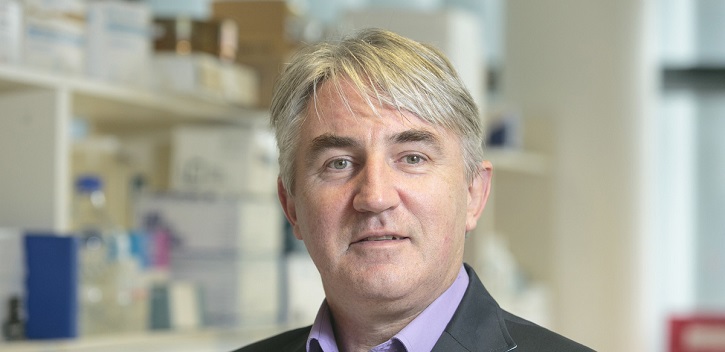UCC advances stem cell research

More than a decade ago the discovery of stem cells was thought to revolutionise medicine with the hope that tissues and indeed organs might be replaced in humans.
Stem cells offered the potential for ready access to repeat surgical replacement of any number of defective body parts. Although this research has captured public imagination in reality a breakthrough has not yet happened and can be explained by a number of limitations of current stem cells including the ethical and expansion restrictions associated with stem cells from embryos and limited availability of adult stem cells.
Professor Noel Caplice and colleagues at the Centre for Research in Vascular Biology, UCC have over the past decade explored whether a blood vessel stem cell with similar replacement capability to the blood stem cells used for bone marrow transplants could be isolated from lower animals and humans. Professor Caplice can now report for the first time the isolation of this cell, which he has called the primitive progenitor cell, from rodents and more recently humans. This cell can easily be reprogrammed into a smooth muscle cell and can be expanded in sufficient quantity to recreate a functioning artery outside the body. This stem cell derived artery has been used to replace the aorta (largest artery in body) in a rodent with survival and normal function of this structure out to several months.
Perfect timing for Valentine's week-UCC researchers make our hearts work better https://t.co/oyor7P2AxW @DickAhlstrom @UCCResearch
— UCC Ireland (@UCC) February 9, 2016
This represents a major breakthrough in the field of blood vessel replacement as these reprogrammed stem cells have theoretically unlimited expansion capability and thus unlimited graft making potential. This type of stem cell graft offer new options for all patients that either lack or have unsuitable bypass material to undergo bypass surgery (approximately 30% of all patients). In addition it represents the first significant step in tissue and potentially organ replacement in the heart and blood vessels throughout the body.
In addition given that the reprogrammed stem cell creates a smooth muscle cell it is possible that these cells may be used to fabricate parts of other organs in the body that are made up mostly of smooth muscle cells. Such replacement therapy might include the bladder, ureter, urethra and perhaps even the oesophagus (eating tube).
Future testing of this stem cell replacement therapy will be required in larger models before proceeding to human trials. This work was published recently in the prestigious journal Stem Cells.
